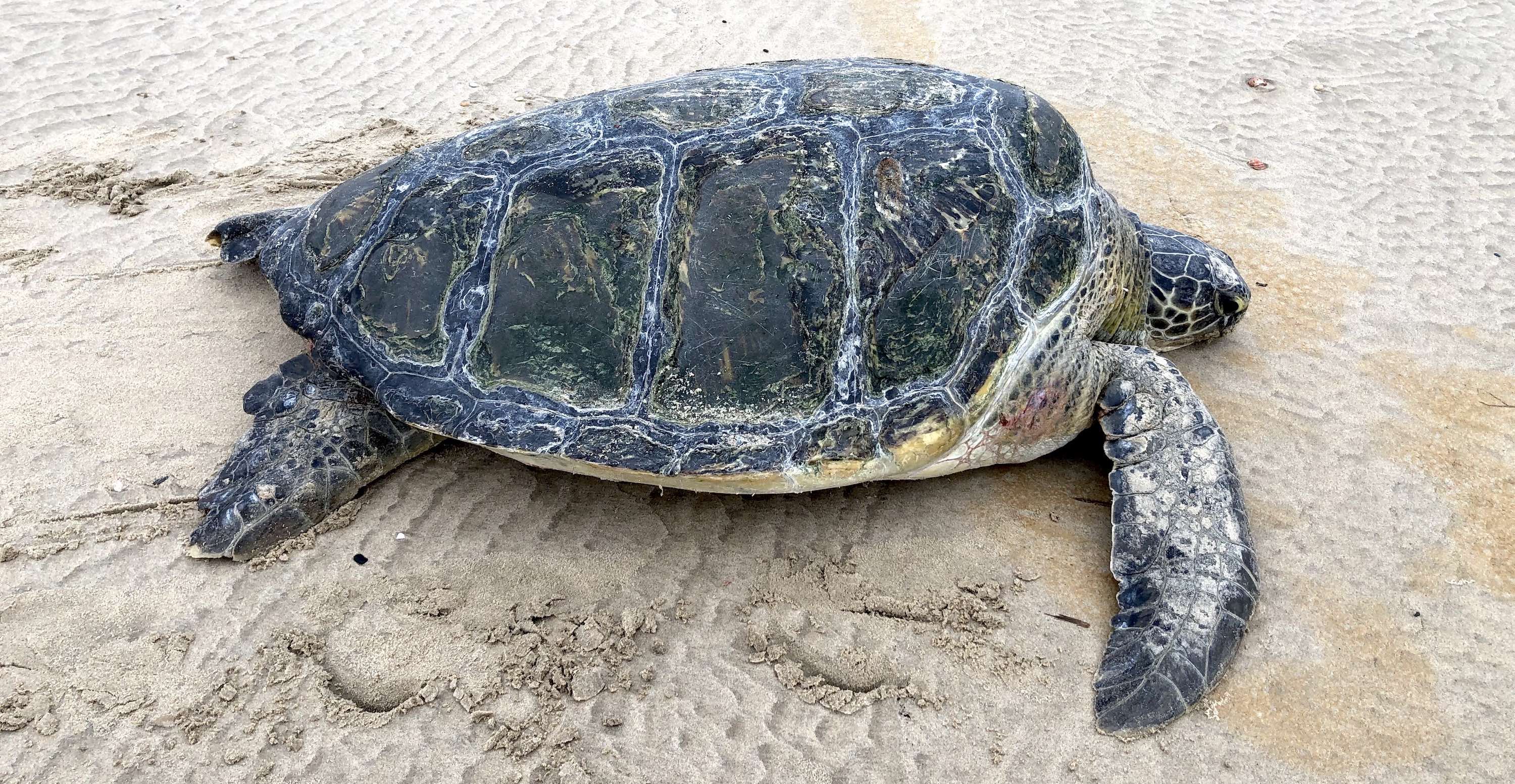
Did you know a green sea turtle was recorded nesting in Namibia for the first time ever in 2020? Peter Cunningham and Johan van Rooyen reported this first ever sighting in the Namibian Journal of Environment with this description: On 4 February 2020 at 17h00, on a warm, sunny wind still day, an adult female of approximately 1 m in width was encountered closing a nest in typical fashion – i.e. projecting sand backwards with powerful thrust of the fore flippers.
This is exciting news for Namibian marine biologists! Although green turtles have come ashore in Namibia before, this is the first confirmed green turtle nesting activity. But do you know much about the new visitor to our shores? Here are eight important things that you should know about green sea turtles:
1. Sea turtles are very different from tortoises
1. Sea turtles are very different from tortoises
A turtle is a reptile that lives primarily in the sea and only comes on land to nest, unlike tortoises that live entirely on land. Turtles eat both plants and animals and have a flat, light shell to help them swim easily. While tortoises eat plants only and have a domed, thick shell that provides protection from predators.

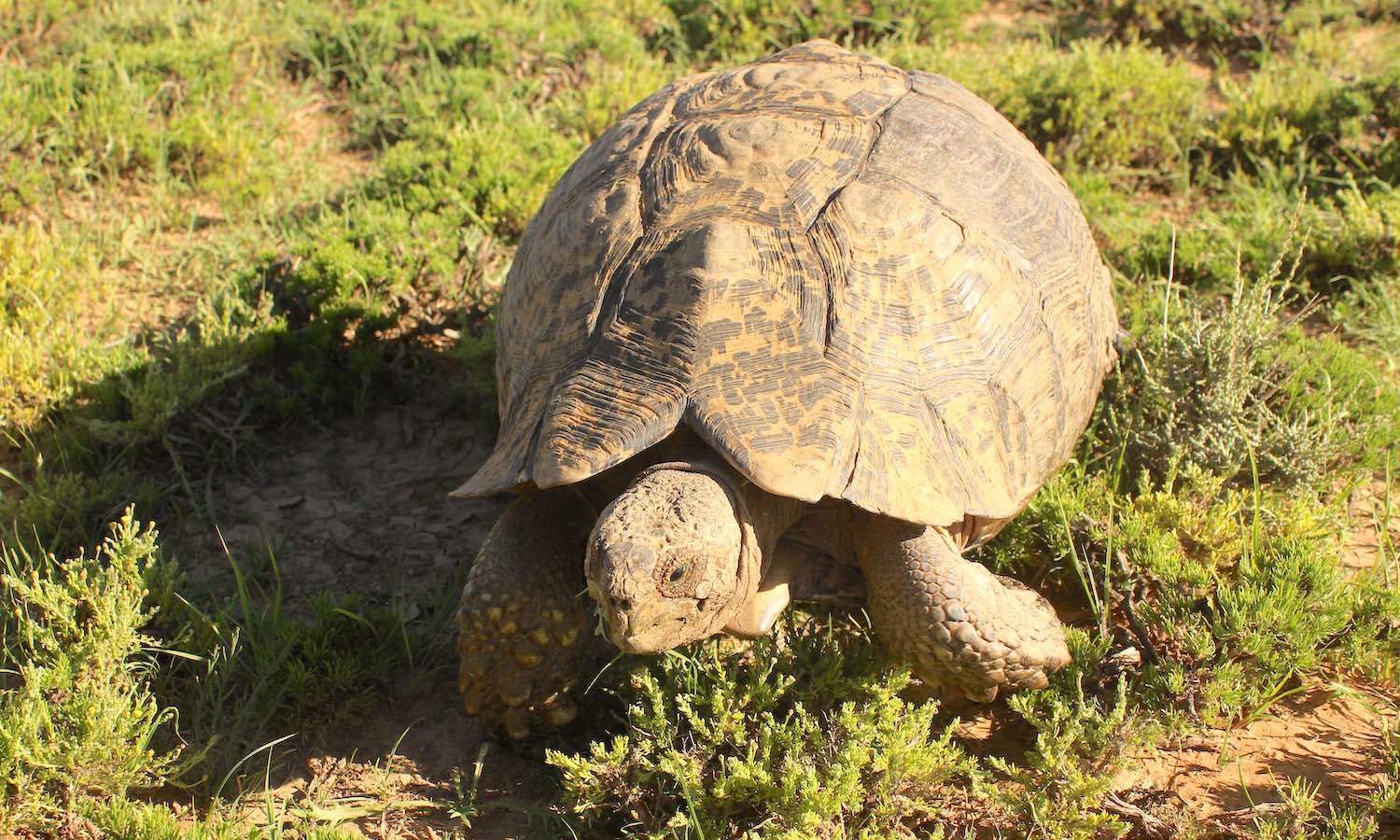
2. Green turtles get their trademark colour from their food
2. Green turtles get their trademark colour from their food
The green sea turtle is the only purely herbivorous sea turtle that eats seagrass and algae as adults, although the juveniles are primarily carnivorous. These turtles give a new meaning to the phrase you are what you eat
! This seagrass diet makes the turtle's fat turn a greenish colour, hence its common name. This also means that green turtles are not always green, and can be brown, grey, black or yellow depending on their diet.
3. Green turtles lay eggs
3. Green turtles lay eggs
Females will lay about 100-200 eggs at a time. Once the eggs hatch, baby green turtles will make their way to the ocean, living in the open seas for several years until such time that they need to nest. Sea turtle nests are highly vulnerable: people may drive over or step on the nests – destroying the eggs in the process – without even realising it. Even though turtles are protected in Namibia, it is important that we become aware of this endangered species and find ways on how we could contribute to its safety and conservation. When the scientists discovered the green turtle nest at the Kunene River mouth, they marked the site with driftwood to prevent people from driving over and damaging the nest.
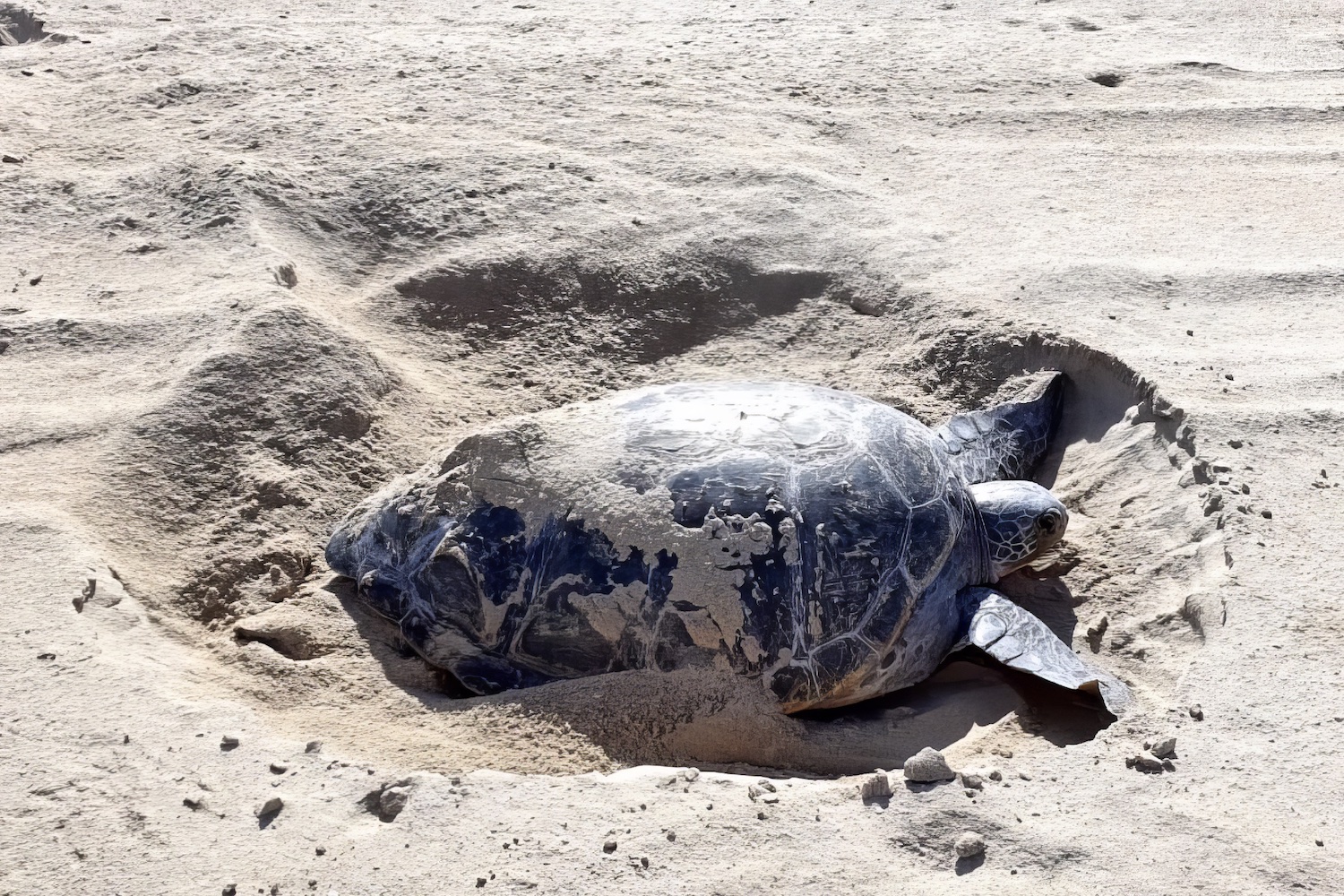
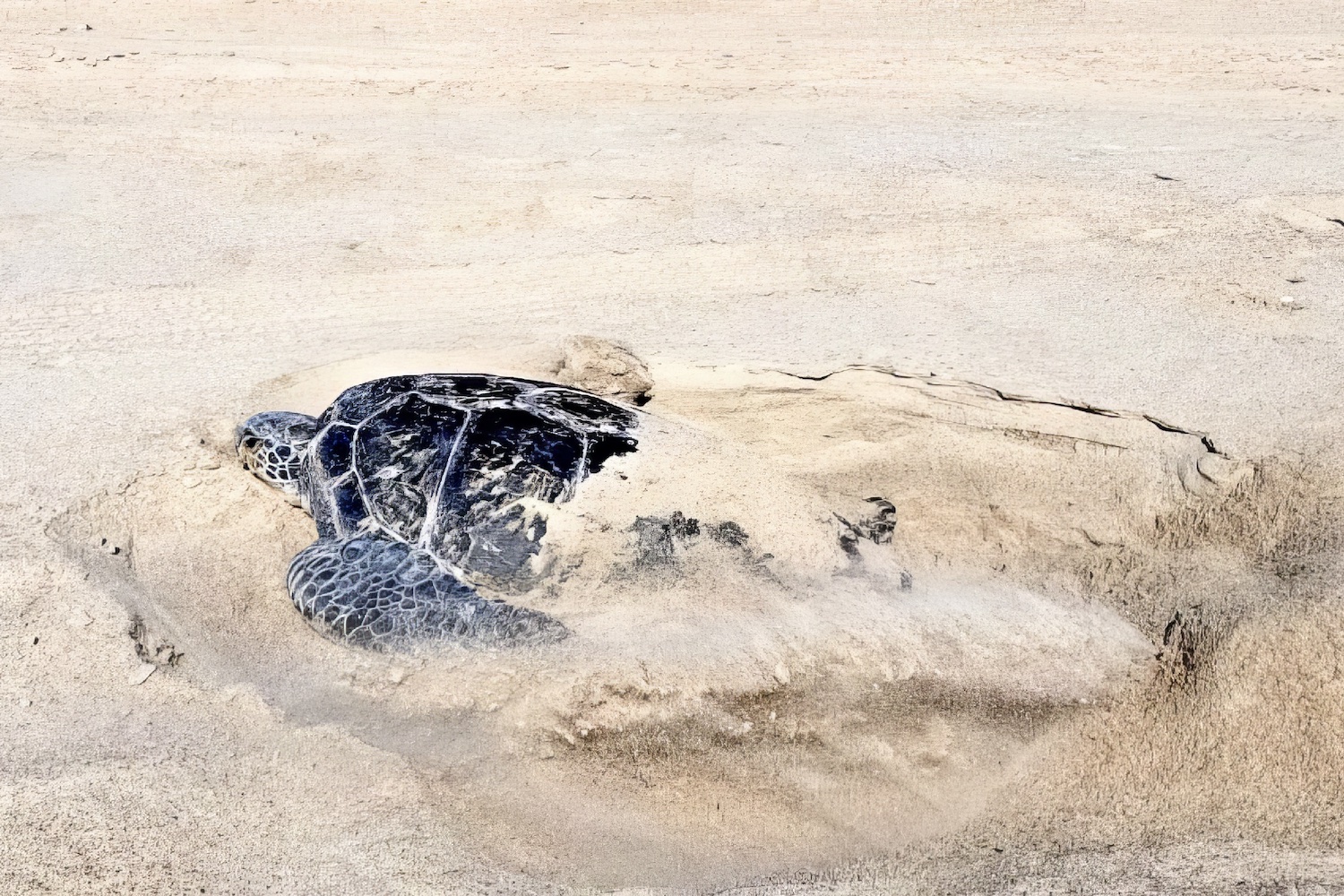
4. Green turtle nests are affected by the surrounding environment
4. Green turtle nests are affected by the surrounding environment
Like other marine turtles, the temperature of the nest determines the sex of baby green turtles. Cooler temperatures lead to more male hatchlings and warmer temperatures lead to more female hatchlings. The adult female turtle at the beginning of our article nested along the mouth of the Kunene River, which is colder than the usual turtle nesting sites further north. Unfortunately her eggs didn't hatch successfully. The researchers who found her nest speculated that cold temperatures and wet nest conditions prevented her eggs from hatching.
5. Green turtles can swim over 2,600 kilometres in their lifetimes
5. Green turtles can swim over 2,600 kilometres in their lifetimes
Green turtles are known to travel long distances during their lifetime, with recorded distances longer than 2,600 kilometres as they migrate between their feeding grounds and nesting sites. We know how far they travel because turtle researchers have attached satellite tags to the turtles' upper shell and every time the turtle is on the water surface, information regarding their location is transmitted to scientists' computers. Green turtles are found all over the world, with nesting sites in over 80 countries. They prefer warmer, tropical waters, which is why they are rare in the cold waters of the Atlantic and why seeing one in Namibia is highly unusual.
6. Turtles return to where they were born to breed
6. Turtles return to where they were born to breed
Female green turtles leave the ocean and travel onshore to nest, choosing the exact same nesting beach where they were born. Knowing that green turtles travel hundreds of kilometres back to their birthplace to nest, it could not have been a coincidence that the turtle at the beginning of our article was nesting on Namibia's shores. It is likely that this female turtle was born in Namibia, or at least on a beach in southern Angola. Given the remoteness of the Kunene River mouth, previous nesting events may have gone unrecorded. Alternatively, this turtle could be expanding the range of green turtle nesting areas by coming further south than others of her species. If this were the case, it would be fascinating to know what environmental conditions are causing this shift.

7. Green turtles are endangered
7. Green turtles are endangered
Based on the IUCN Red List, green turtles are classified as endangered as they face multiple threats due to ignorant human behaviour. These threats include loss of nesting sites, human consumption of both turtle eggs and adults and direct turtle killing. Countries such as Namibia have laws in place that protect these turtles but even that doesn't guarantee their safety.
The Kunene River mouth area is an important area for Namibian biodiversity, providing key habitat for many species along an otherwise harsh desert coast. Although the Namibian government already protects this biodiverse area as part of the Skeleton Coast National Park, it is still threatened by mining interests. The breeding of green turtles in this area further confirms the ecological importance of the Kunene River mouth.
8. Green turtles are known to nest on West Africa's continental shores
8. Green turtles are known to nest on West Africa's continental shores
The most important and popular breeding site for green turtles in Africa is found in West Africa, particularly in the Bijagós archipelago in Guinea-Bissau. Other nesting areas in Africa for green turtles include the coast of The Gambia between Bakau and Kartung. Unfortunately, green turtles and their habitats are constantly being threatened in these areas, by poaching of their eggs and illegal killing for meat. Turtles are not only in danger on land. Fishing nets and lines are responsible for turtle mortality both off the African coast and around the world.
Conclusion
The first recorded nesting event of a green turtle was an exciting observation, although it is unfortunate that the eggs did not hatch. Given its endangered status, we hope that more green turtles will come to the Kunene River mouth in future and breed successfully.
If you enjoyed this page, then you might also like:
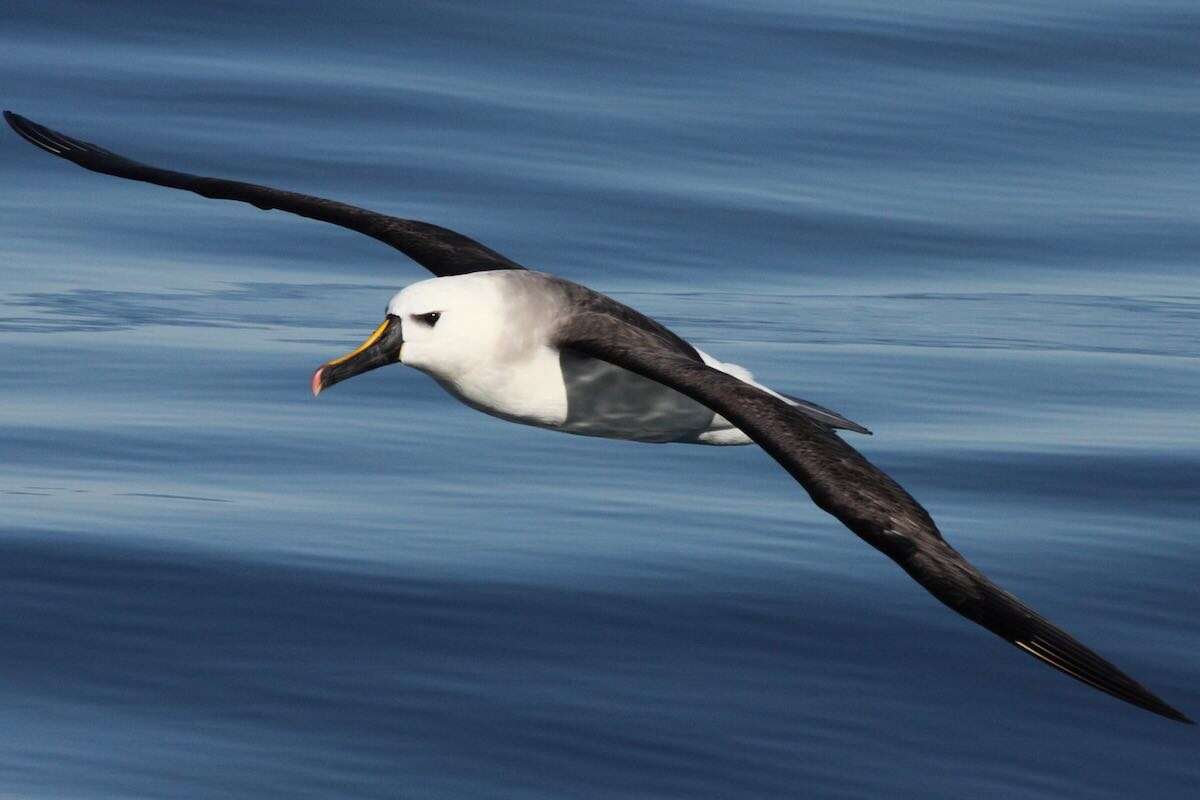


For articles on similar topics, please click one of the following options:

We use cookies to monitor site usage and to help improve it. See our Privacy Policy for details. By continuing to use the site, you acknowledge acceptance of our policy.